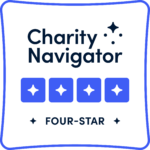Nearly every oncologist can tell the story of cancer patients who beat the odds, responding so well to treatment that they continued to live many years disease-free, while most of their peers worsened and eventually died.
Dr. David Solit decided to find out why.
Solit, an oncologist at Memorial Sloan-Kettering Cancer Center in New York City, delved into the case of a woman with advanced bladder cancer who volunteered for a 45-patient study of theNovartis drug Afinitor. He discovered that a combination of two gene mutations made her particularly receptive to the treatment.
“Every other patient died, but she’s without evidence of disease for more than three years now,” said Solit.
Over the past century, such patients – sometimes called “outliers” or “super responders” – have stood out by staging remarkable recoveries, or long-term benefit, from cancer drugs that provide little or no help to others. Little heed has been paid to them because there was no way to know why they fared so well. In most cases, the drugs that helped them were abandoned because they helped too few patients.
Now, armed with huge advances in genetic sequencing technology and growing knowledge of the genetic underpinnings of cancer, a handful of top academic centers are taking a new look at outlier patients. The research may lead to new uses for well-known treatments as it becomes clearer why particular patients respond so well, or even revive drugs left for dead if the right patient population for the treatment can be identified.
“These experiences have always been out there, where somebody’s grandmother was told she had two months to live and they tried something and she bounced back,” said Dr. Bill Hahn, an oncologist with the Dana-Farber Cancer Institute. “But nobody ever understood why grandma responded in such a really amazing way.”
The Bethesda, Maryland-based National Cancer Institute (NCI) and academic researchers it sponsors have just launched “super responder” initiatives to match patients having little-known gene mutations to drugs already shown to help others with the same mutations, even if their tumors are for a variety of organs.
New York’s Sloan-Kettering, prompted largely by Solit’s research, aims to create an “outlier” clinic devoted to explaining exceptional responses. Other projects are underway at Houston’s MD Anderson Cancer Center and Boston’s Dana-Farber.
Drugmakers are cautious, if only because they are sufficiently busy trying to develop new medicines against some 300 identified cancer gene mutations. With the priority on developing drugs that will help large numbers of patients, they are reluctant, at least for now, to look backward to salvage failed drug studies.
“We’ve tried to develop our drugs very specifically so we actually develop the drug for the right population of patients” in the first place, said Sandra Horning, a senior oncology executive at Roche’s Genentech unit.
But Harold Varmus, director of the NCI, says drugmakers stand to benefit hugely from outlier research.
“(Drugmakers) are struggling now,” Varmus said. “They know there’s a lot of genetic damage in tumors, but they don’t know which kind of genetic damage represents the best target for developing new drugs.”
GENOME SEQUENCING AS STEP ONE
Fueling the research is new technology that has brought the cost of sequencing the human genome down from tens of millions of dollars to about $5,000. The cost of such analysis is expected to drop to as little as $1,000 in the next few years.
“It will be cheaper to do your whole genome sequencing than to get an MRI scan,” said Dr. Christopher Austin, director of the National Center for Advancing Translational Sciences. “When that happens, identifying whether a mutation is making you an exceptional responder will be much easier.”
Austin expects special-responder research will eventually link individual gene mutations to totally different ailments beyond cancer, allowing drugmakers to broaden the use of their medicines.
A tumor sample from Solit’s patient underwent whole genome sequencing – meaning all genes within it were analyzed for mutations, or variations, in the repeat stretches of compounds called bases that make up the genetic code.
“She had 17,000 mutations in her tumor that were not found in her normal cells,” Solit said. After months of analyzing 140 mutations that were considered suspects, two of them – genes named TSC1 and NF2 – stood out.
“It was like, ‘Wow,’ that’s why the patient was unique, and why even though Afinitor was generally disappointing in the bladder cancer trial, it was the right drug for her,” Solit said. “It was the combination of both mutations that probably led to her complete response,” especially the TSC1 mutation.
Zeroing in on the two genes – among more than 20,000 human genes that make proteins – would not have been possible even five years ago, Solit said. “Maybe we would have looked at one gene and if that didn’t show anything we’d look at another. Now we can sequence the entire genome and look at every gene, every needle in the haystack, at the same time.”
By linking the TSC1 mutation to bladder cancer, Solit has discovered a new “biomarker,” or suspected link, to the disease, while simultaneously identifying a possible appropriate drug for patients with any type of cancer who have that mutation.
The next step, he said, is to develop a diagnostic test for the TSC1 mutation and use it to screen patients being treated at his hospital for all varieties of cancer.
“We hope by year’s end to be routinely doing TSC1 testing on large numbers of patients,” Solit said. “The mutation could be important across tumor types.”
Once a small group of patients with the mutation is identified, they would all be treated with Afinitor – which is now approved for cancers of the breast, kidney and pancreas – regardless of the type of cancer.
“If I was sitting in a pharmaceutical firm and I read about David Solit’s case, I would say, ‘Gee, this is a remarkable change: the mutations that can be found are reasonable targets for developing drugs,'” the NCI’s Varmus said.
RESURRECTING DRUGS, FINDING NEW USES
Hundreds of drugs have been abandoned over the years after failing clinical trials, although many had their own exceptional responders.
Some of those drugs could be resurrected, and newer ones could be saved, if the genetic links are established, Solit said. He sees Roche’s Avastin as a candidate for study for new, or more targeted, uses as well.
With annual sales of more than $6 billion, Avastin is approved to treat cancers of the colon, lung and kidney.
The U.S. Food and Drug Administration in late 2011 withdrew its approval of Avastin for breast cancer, three years after clearing it for the condition. Subsequent research showed the drug was not effective enough to justify its risks, even though some women had strong responses to the medicine.
Philippe Bishop, a senior research executive at Roche’s Genentech unit, said exceptional responses have been seen in patients taking Avastin for breast cancer and other cancers, but no specific genetic reason has been identified.
To get a clearer picture, the company last year started an online study called Invite, in which patients who have taken Avastin are asked to donate a saliva sample for genetic analysis, and to complete a survey that can help assess whether they had an exceptional response to Avastin.
“We’re trying to correlate what makes them unique and maybe what part of their genetic makeup makes them do so well,” Bishop said, adding that exceptional response would be defined as being alive for a long time without their disease getting worse.
MD Anderson, meanwhile, is encouraging its doctors to submit tumor samples from exceptional responders in past drug trials for a detailed genetic analysis.
“We’re looking at data from several dozen trials in a variety of cancers,” said senior researcher Dr. Funda Meric-Bernstam.
She noted exceptional responders also include patients who fare exceptionally poorly in trials, in terms of side effects or development of drug resistance. “They are the flip side of the coin, so we want to know why their tumor outsmarted the drug.” That information could help in designing drugs that sidestep side effects and produce more-prolonged benefit.
Novartis, like Genentech and other drugmakers, designs its cancer studies around patients with a single pre-identified cancer-gene mutation.
But research chief Mark Fishman said the Swiss drugmaker has also begun routinely sequencing tumors of the patients for another 300 known cancer-gene mutations before they enter early-stage studies, an extra step that could help explain eventual exceptional responses to its drugs.
“In any given patient, if we analyze only one gene we may not have a complete enough picture of the cancer because sometimes you have a time bomb sitting in another gene,” Fishman said. Such interaction of cancer genes is a main reason drugs no longer work – why the cancer recurs – after an initial period of effectiveness from a drug, he said.
Dana-Farber’s Hahn said he knows of no trials that have pulled together patients having the same gene mutation as one already tied to a special response to a given drug. But Dana-Farber, the NCI and Sloan-Kettering have such studies on their drawing boards, he said.
The research centers will have to work together nationally and overseas to find patients with the shared mutations, Hahn said. “Even if there are only one or two in individual hospitals, you can put them together and do a trial that has a reasonable number of patients.”
An NCI initiative is attempting to recover tumor samples from exceptional responders in up to 200 U.S. drug trials it has supported. It will sequence them to find “actionable mutations” that can be targeted for improved treatment.
“This is an incredibly promising opportunity,” Varmus said, “for us to take advantage of our new skills and analyze what’s really wrong with the cancer cell, and figure out if we have some ways to destroy that cell.”
http://www.reuters.com/article/2013/09/15/us-cancer-superresponders-idUSBRE98E07420130915

